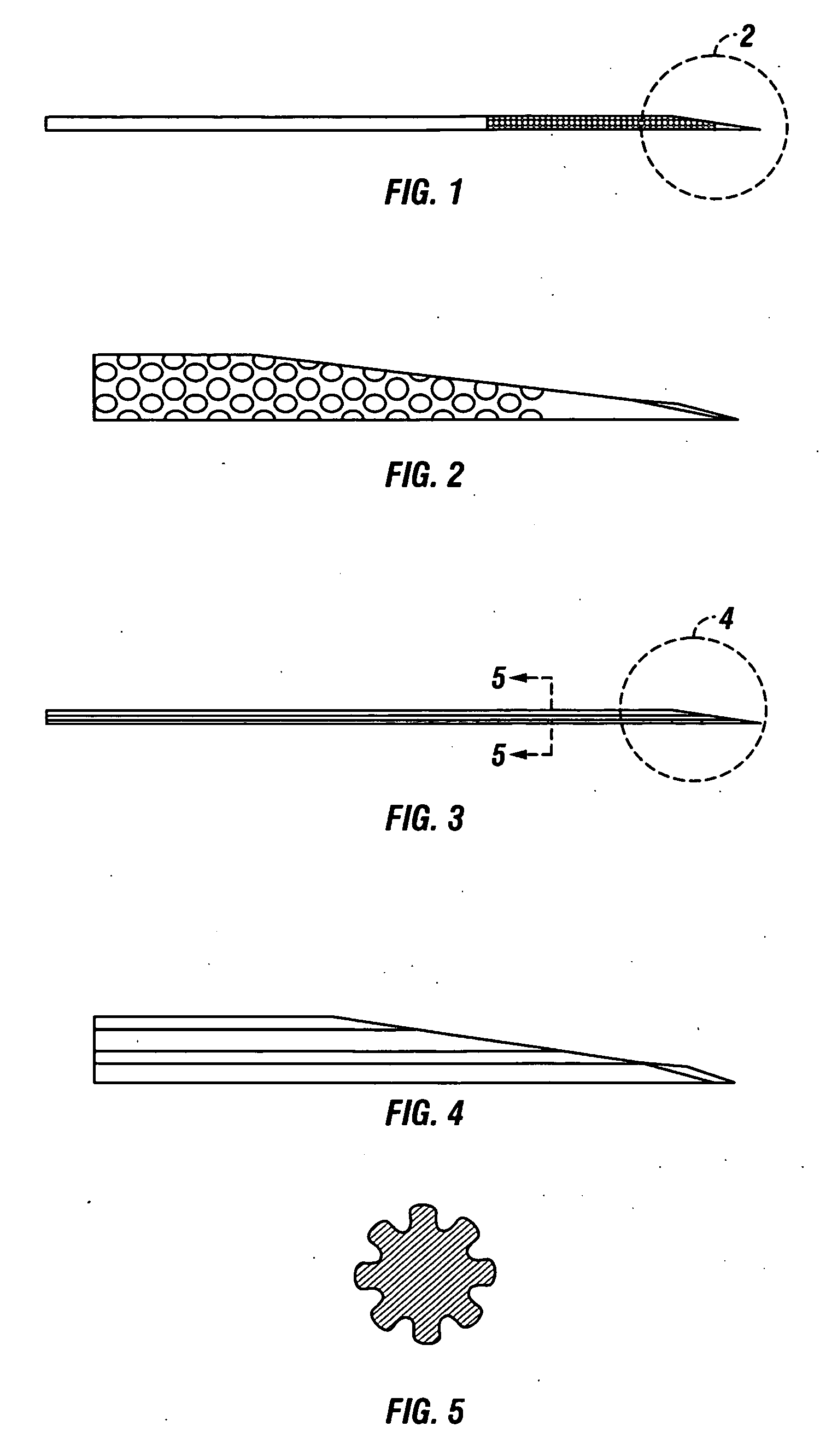Low pain penetrating member
a penetrating member and low-pain technology, applied in the field of low-pain penetrating members, can solve the problem of less power desired for retraction of the penetrating member from the skin, and achieve the effect of improving the configuration of the penetrating member and increasing the likelihood of spontaneous blood generation
- Summary
- Abstract
- Description
- Claims
- Application Information
AI Technical Summary
Benefits of technology
Problems solved by technology
Method used
Image
Examples
Embodiment Construction
[0070] The present invention provides a solution for body fluid sampling. Specifically, some embodiments of the present invention provides method for improving spontaneous blood generation. The invention may be designed for use with a high density penetrating member cartridge. It may use penetrating members of smaller size, such as but not limited to diameter or length, than those of lancets known in the art. The cutting surfaces of the penetrating member may be configured for improved cutting. At least some of these and other objectives described herein will be met by embodiments of the present invention.
[0071] It is to be understood that both the foregoing general description and the following detailed description are exemplary and explanatory only and are not restrictive of the invention, as claimed. It may be noted that, as used in the specification and the appended claims, the singular forms “a”, “an” and “the” include plural referents unless the context clearly dictates other...
PUM
 Login to View More
Login to View More Abstract
Description
Claims
Application Information
 Login to View More
Login to View More - R&D
- Intellectual Property
- Life Sciences
- Materials
- Tech Scout
- Unparalleled Data Quality
- Higher Quality Content
- 60% Fewer Hallucinations
Browse by: Latest US Patents, China's latest patents, Technical Efficacy Thesaurus, Application Domain, Technology Topic, Popular Technical Reports.
© 2025 PatSnap. All rights reserved.Legal|Privacy policy|Modern Slavery Act Transparency Statement|Sitemap|About US| Contact US: help@patsnap.com



